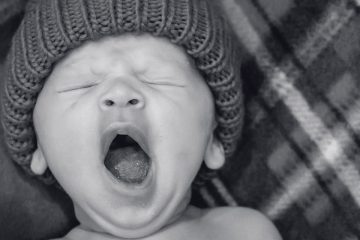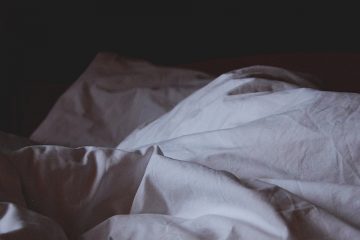Sleep is the time when our brain invokes its ‘automatic daily spring cleaning’. Like anyone who has performed spring cleaning or any form of cleaning or tidying up will know that you need to have a set process which you follow. For instance, you will need to sort out and group items along the lines of keep, recycle, junk etc. and then ‘bag’ them and take them where they need to be. Thereafter you will literally clean the house, dust, wipe, vacuum before you do any repairs or touch up with paintwork, etc. and then rearrange the contents.
In this series, I will be examining why it’s the quality and not the quantity of sleep we have is crucial to the health and well-being of our mental and physical body. This series comprises:
- PART 1: Why Spring Cleaning the Mind is Necessary
- PART 2: Spring Cleaning Sleep Cycle
- PART 3: The Right Amount of Sleep
- PART 4: How to achieve quality Sleep
PART 2: Spring Cleaning Sleep Cycle
In Part 1, I outlined the importance of performing a ‘spring clean’ to keep our places tidy and the problems it causes. In this Part 2, I explain how similar the brain is in the way it performs its daily clean, the stages it goes through in the cleaning process – The Sleep Cycle, together with a list of the potential problems that arise in children, young adolescents and adults.
Sleep Cycle
Studies have shown that our sleep is quite a complex process. It is not as simple as turning off a light switch, to move us from being awake to asleep. We go through various stages of sleep from light sleep where we are semi-awake to deep sleep where we have no idea of what is happening, multiple times. This is generally referred to as the ‘Sleep Cycle’.
The remarkable thing is that our brain is not idle when we sleep. It enters a ‘spring cleaning’ mode. This is similar to when we sort out the clutter in our home, we usually group them into various piles. Our brain does the same thing, every night when we are sleeping, sorting and grouping our experiences, thoughts, feelings, memories.
The sleep cycle is grouped into two parts, non-rapid eye movement (nREM sleep) and REM (rapid eye movement sleep (REM) sleep. We experience on average 4 to 5 sleep cycles when we sleep at night. Each cycle made up of multiple ‘stages’ or parts, and each stage lasts for a different amount of time. During nREM sleep, we go through different combinations of stages 1-4 (see below) and in REM sleep we experience just stage 5 (see below).
nREM sleep cycles and stages per cycle
- 1st cycle = stage 1, 2, 3 and 4,
- 2nd cycle = stage 4, 3, 2. This cycle is repeated until approximately 90min has passed since stage 1.
- 3rd cycle = Stage 5, REM sleep. In the first run of the sequence, this cycle lasts approximately 10min, thereafter in subsequent cycles it gets longer with the last one last 1 hour
- 4th cycle = stage 2
Stage 1 – semi-conscious state (Alpha to Beta). This state begins when you first lie down and close your eyes. As you gradually fall asleep, beta waves of wakefulness are replaced by alpha waves. Theta waves would also start emerging after a period of the Beta stage has passed.
Physical Signs: slow rolling eye movements, reduced body movements and responsiveness. Each period of Stage One sleep generally lasts 3 – 12 minutes.
Stage 2 – light sleep state (Beta to Theta). In this state the person is dipping in and out of light and deeper sleep. The dips into the deeper sleep last around 1-2 seconds. Your body is getting ready for deep sleep.
Physical Signs: decreased eye movements, heart rate and breathing slows, reduced muscle tone and body temperature drops.
Stage 3 – Moderate Deep Sleep (Theta to Delta). Predominately a deep sleep with occasional forays into a light sleep. non-REM sleep marks the passage from moderately to deep sleep. Delta waves appear and soon account for nearly half of the waves. Greater activity observed in the prefrontal cortex rather than eye movements.
Physical Signs: Muscles have some tone, and sleepers show very little response to external stimuli unless they are very strong or have a special personal meaning (for example, when someone calls your name, or when a baby cries within earshot of its mother). Otherwise, relaxed body position, slow and rhythmic breathing, and a decreased heart rate.
Arousal is difficult and, if awakened, will appear confused and disoriented. Each period lasts about 10 minutes during the first sleep cycle of the night but accounts for only about 7 percent of a total night’s sleep.
Stage 4 – Deep Sleep (Delta). Deepest sleep yet in which we sleep the most soundly. This is the stage of sleep that accomplishes most of the body’s repairs and regrows tissues, builds bone and muscle, and strengthens the immune system
Physical Signs: Muscles still have their tonus, and some movements of the arms, legs and trunk are possible. Lowest brain temperature, reduced breathing, heart rate and blood pressure. It is most difficult to wake someone up, which when they are awoken would feel disoriented for a few minutes.
Lasts about 35 to 40 minutes during the first sleep cycle of the night; it accounts for 15 to 20 % of total sleep time.
REM sleep cycle and stage
Stage 5 – Paradoxical Sleep. REM sleep is also referred to as paradoxical sleep because, while the brain and other body systems become more active, voluntary muscles (non-essential to survival) become more relaxed, or paralysed.
Involuntary muscles (heart, gut etc. essential for survival) continue to function on their own.
The paralysation is an evolutionary safety/built-in measure protecting you causing damage to yourself i.e. you can’t leap out of bed and run. Some describe this as not being able to move or escape from nightmares etc.
Most dreaming occurs during this stage and is characterized by rapid eye movement, increased heart rate & breathing and brain activity. Some really ‘creative’ intense dreams will be experienced at this stage of sleep.
Usually, REM sleep happens 90 minutes after you fall asleep. The first period of REM typically lasts 10 minutes and thereafter each of the later REM stages gets longer, with the final one lasting up to an hour.
Babies can spend up to 50% of their sleep in the REM stage, compared to only about 20% of adults.
Broken Sleep Cycle
Do you recall a time when you are in a deep thought about something you are planning, such as a holiday or a party, and just about when you have nearly got it sorted, you are interrupted? And when you attempt to go back to the point just before the interruption, it’s not possible and left feeling frustrated and unfulfilled and you either start the whole planning again or leave it for another time. The sleep cycle is just like that thought and if it is interrupted, the sorting and grouping of our experiences, thoughts, feelings, memories get messed up and confused.
If you experienced this every day, you would literally go crazy. But this is not all. During sleep, our physical body also gets its nightly service. Therefore it’s a double whammy where not only does our mind gets frazzled, our body also starts to break down.
There exist over 70 types of sleep disorders of which the most common: insomnia, sleep apnoea (disordered breathing), limb movement syndrome (unpleasant fidgeting), and narcolepsy (extreme sleepiness or falling asleep suddenly) affect all ages. There are however specific disorders that affect certain age groups, an example of which are given below.
Children (from new born to 12yrs old):
- Studies show that 69% of children, from nursery to 10 years of age, suffer from at least one sleep-related problem according to the National Sleep Foundation’s (NSF). The most common disorders include:
- Insomnia
- Nightmares
- Restless Leg Syndrome
- Sleep Talking
- Sleep walking
- Night/Sleep Terrors
- Snoring
- Sleep Apnoea
- Extremely and consistently fussy (particularly for new born and infants)
- Separation Anxiety
- Depression
- Narcolepsy
- Over active/Hyperactivity
- Cognitive problems
- Absence of a regular and consistent sleep schedule
- Bruxism
- Bed wetting
- Irritability, aggressiveness, crankiness
Young Adolescents (from 12yrs to 18yrs old) – The most common disorders include:
- Bouts of Moodiness
- Irrational and Aggressive Behaviour
- Cognitive ability, increased doubt/confusion
- Inhibited Academic performance
- Increased daytime Drowsiness
- Depression
- Severe hypersomnia
- low esteem / confidence
- Bed wetting
Adults – The eight most common disorders that plague adults:
- Insomnia. Causes: High levels of stress; certain medications; anxiety or depression
- Sleep Apnoea
- Restless Leg Syndrome
- REM Sleep Behaviour Disorder
- Narcolepsy
- Sleepwalking
- Sleep Terrors
- Stress & Anxiety Depression
- Bruxism (Teeth Grinding)
Having identified typical range of symptoms, causes of disruptive sleep and how to address them effectively are explored in Part 3.



0 Comments